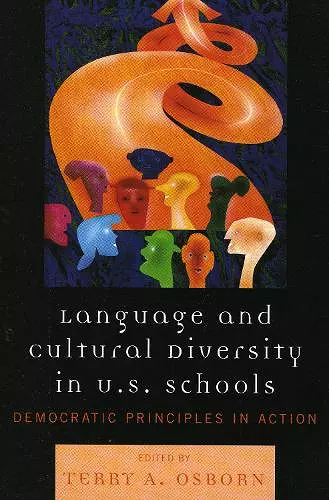Language and Cultural Diversity in U.S. Schools
Democratic Principles in Action
Format:Paperback
Publisher:Rowman & Littlefield
Published:26th Jul '07
Currently unavailable, and unfortunately no date known when it will be back

Diversity is at the heart of today's education debates. Often, school policies and programs designed to encourage and embrace diversity are met with public ire and a deep misunderstanding of how diversity serves learning. This work explains how diversity is an essential element in classroom settings. As children from around the world continue to pour into U.S. classrooms, an understanding of cultural and linguistic diversity in its broadest sense moves to the foreground. In a post 9/11 world, the benefits of understanding diversity take on urgent meaning. The introductory chapter, "Participating in Democracy Means Participating in Schools," sets the tone for the discussion to follow. As the geographic backgrounds of immigrants becomes increasingly diverse, religion must be added to previous discussions of race, ethnicity, and language. Thus, the need for the public to understand how shifts in population affect schools, makes this work a vital resource for anyone concerned with education today.
This text promotes and embraces improvement of diversity along a social activist theme. Student driven curriculum and self-esteem are propounded. * School Library Connection *
With the idea in mind that America will continue to move toward a truly democratic society, however slowly, the contributors of these eight articles and introduction examine the possibility that language and culture will eventually not be an impediment to fulfilling the idea that America is a democracy. * Reference and Research Book News *
One in four students in the US come from households speaking languages other than English, so the US would seem to be on its way to fulfilling the national and global bilingual goal that is considered essential in No Child Left Behind rhetoric. However, it appears that the media and politicians continue to use language and cultural diversity as if they were all about dominance. Language legitimacy, or what constitutes 'real language,' becomes a powerful, yet dangerous, construct in the formation of educational policy. After examinations of Ebonics, American Sign Language, and foreign language teaching to native English speakers, contributors question the wisdom of 'the least restrictive environment' policy. Perhaps, especially for deaf students, the policy should become 'the most enabling environment.' Contributors stress that policy and practice in a pluralistic society must include democratic principles of interdependence and equality. Recommended. Teacher-education faculty and teacher candidates, upper-division undergraduate and above. * CHOICE *
ISBN: 9781578866175
Dimensions: 234mm x 154mm x 18mm
Weight: 363g
240 pages